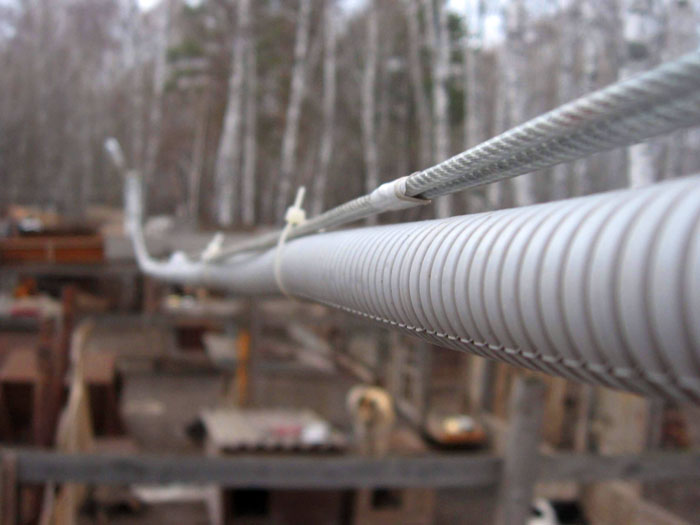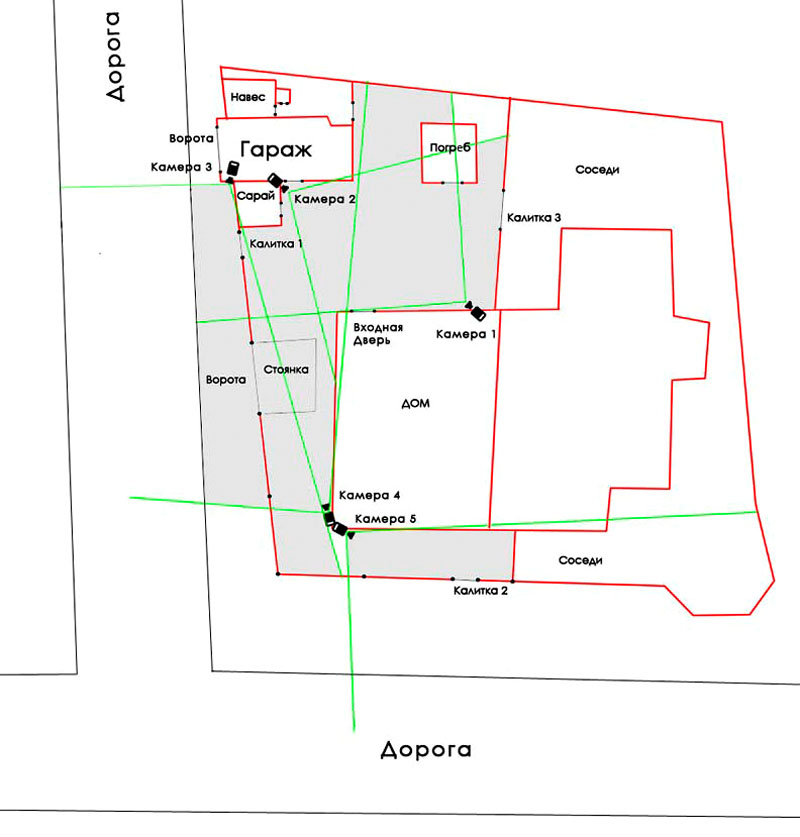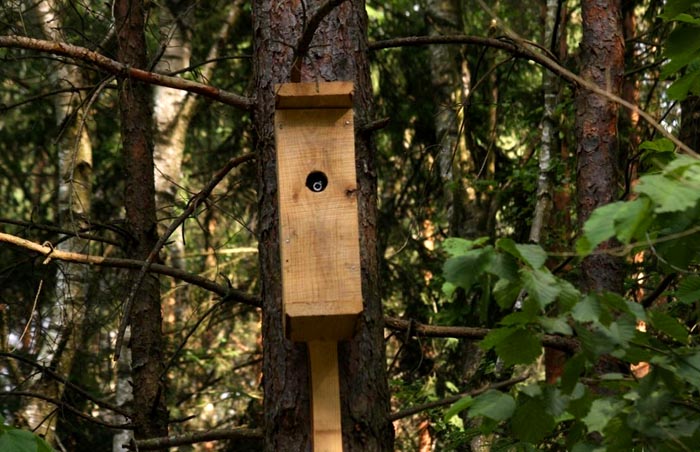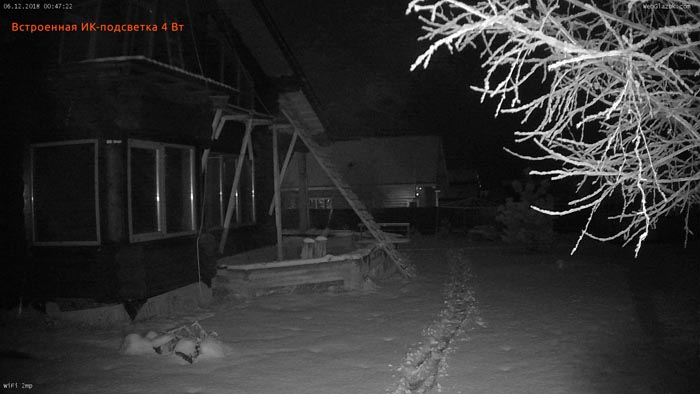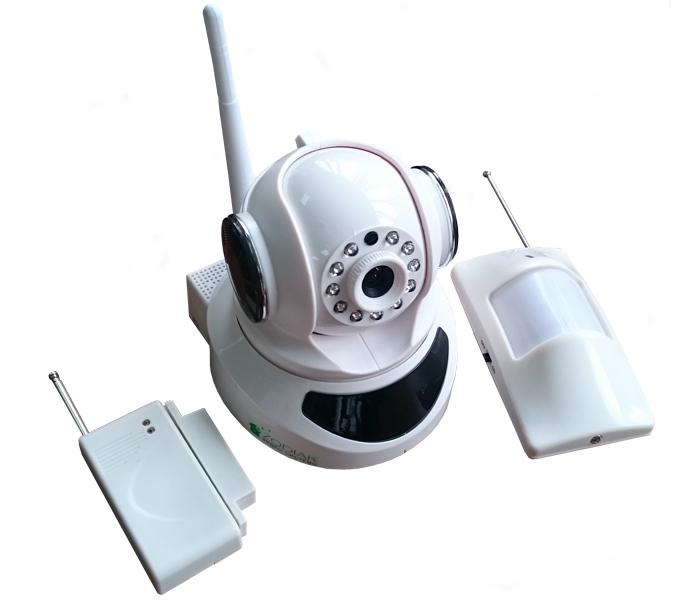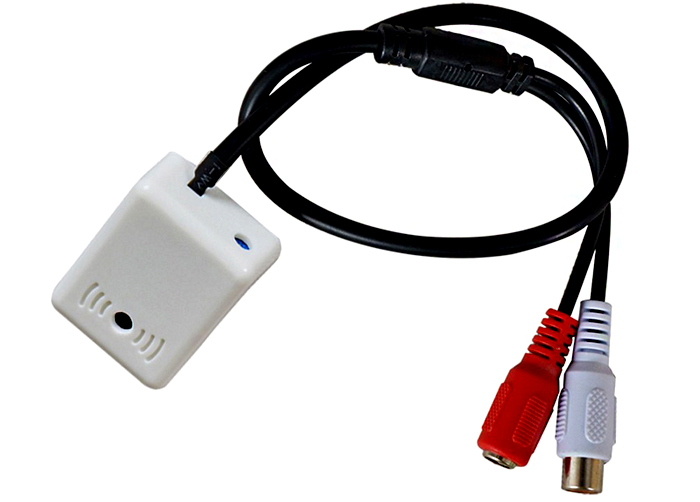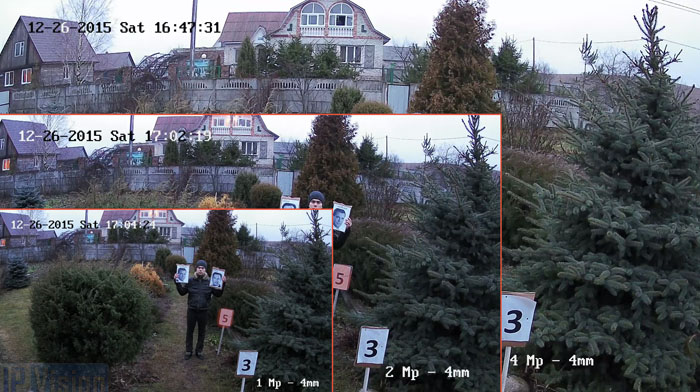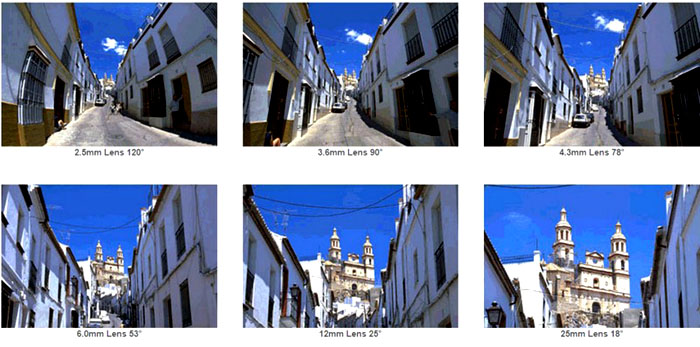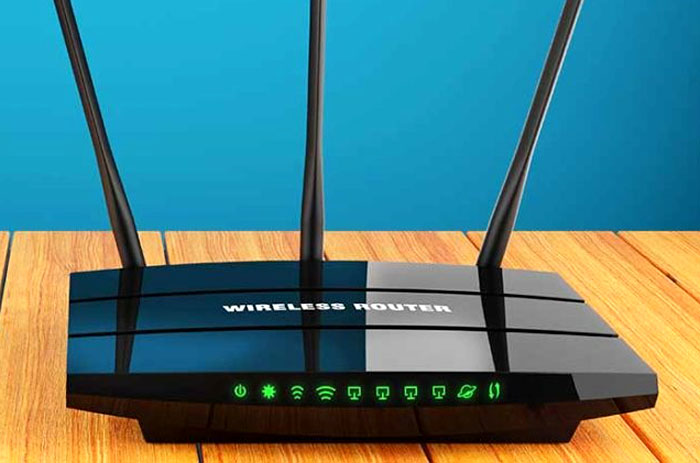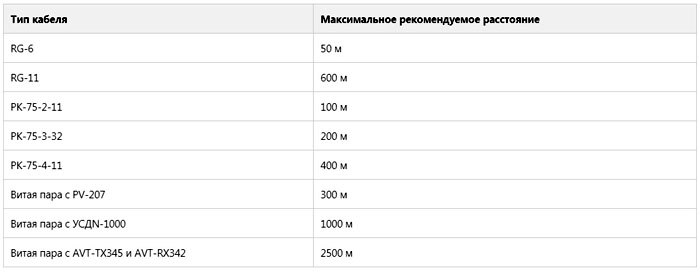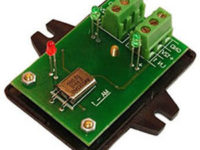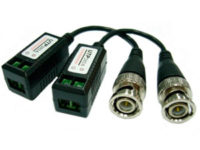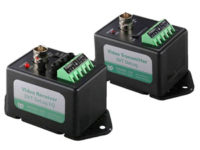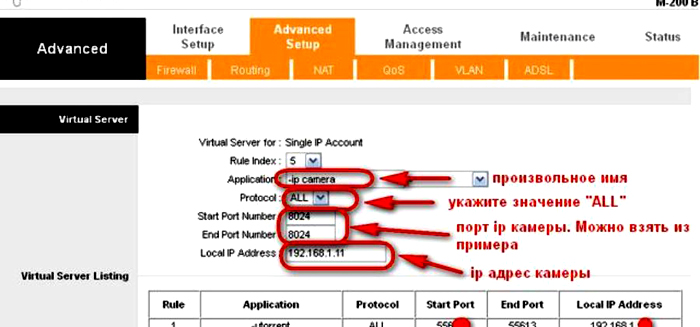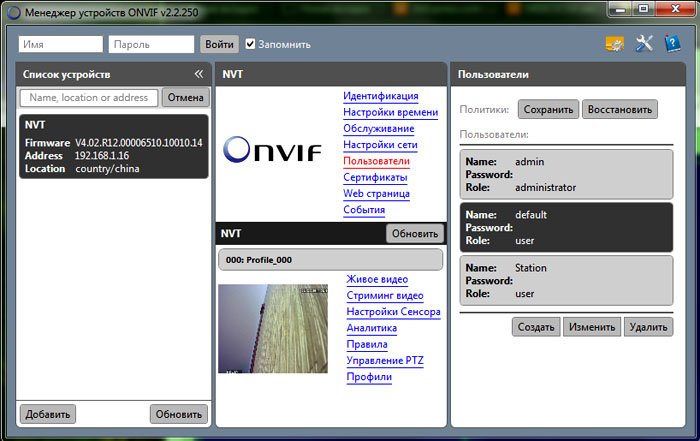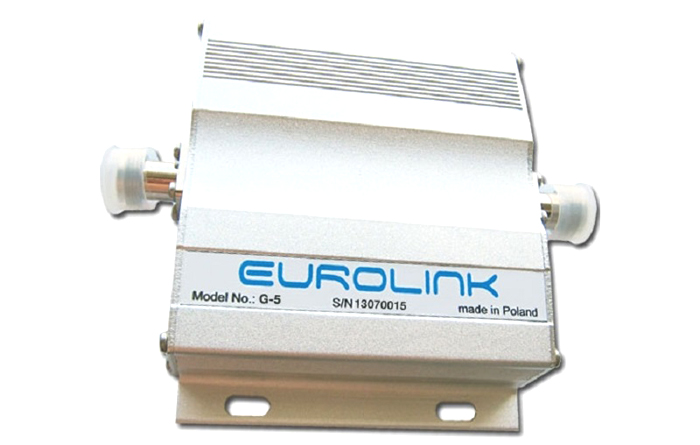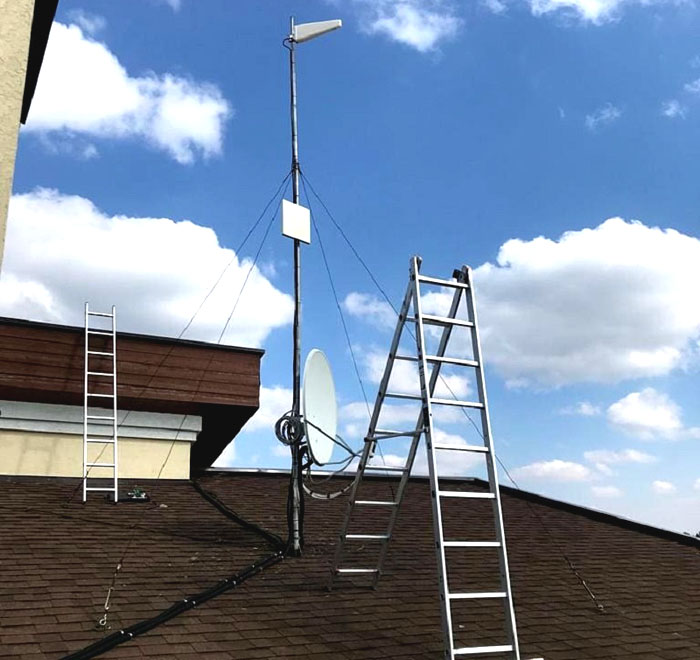How to make effective video surveillance for a summer residence with your own hands - recommendations and instructions
The cottage belongs to the objects of temporary residence. In addition, in the winter period of time in the dacha village, the owners appear quite rarely, and often there is no centralized security. Such conditions provide ample opportunities for unlawful actions, most often it is theft with penetration and acts of vandalism. Given the listed risks, when installing video surveillance in the country with your own hands, you must adhere to certain rules for the selection and location of equipment. This article will provide information on the requirements for the functionality of a video surveillance system, criteria for choosing equipment, basic rules for installation and configuration.
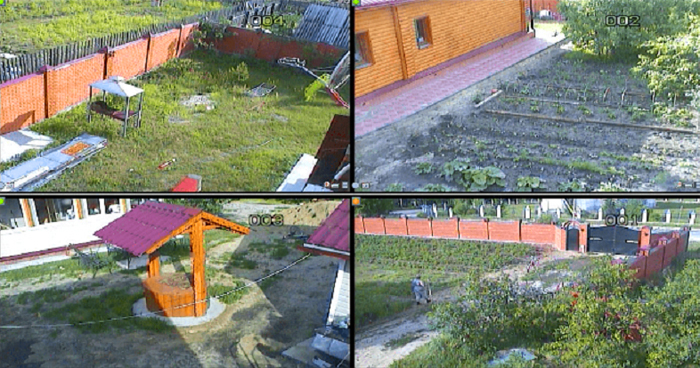
Video surveillance system in the country - a guarantee of safety and security of material values
PHOTO: cat-i.ru
The content of the article
- 1 The specifics of installing video surveillance in the country
- 2 Creating a planning scheme
- 3 Equipment selection criteria
- 4 Installation of a video surveillance system for a summer residence
- 5 Image acquisition methods
- 6 Using repeaters
- 7 How the video surveillance system is implemented in practice in the country / in a country house: video
- 8 conclusions
The specifics of installing video surveillance in the country
Criminals in a dacha village have more freedom of action and have additional time, often unlimited. Taking this into account, the installation sites of peripheral equipment should be as hidden as possible or be out of reach, including with the help of improvised means: sticks, stones, etc.
It is necessary to hide the DVR in a hard-to-reach place inside the house, as well as to carry out a hidden cable laying. Since using it, attackers can easily find key elements video surveillance systems and disable it. At the same time, the owner will not only be deprived of expensive equipment, but also evidence of illegal actions.
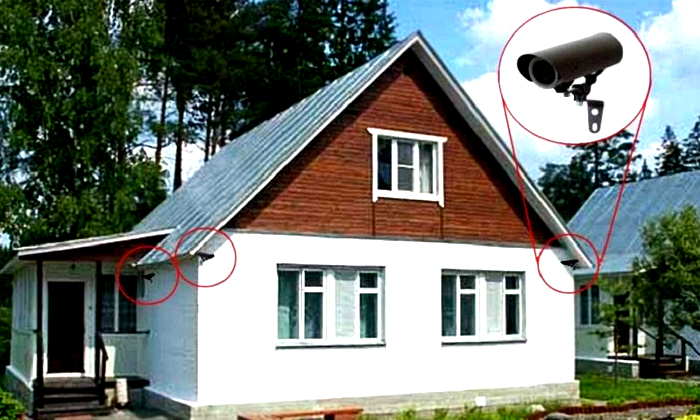
Camera installation locations must be difficult to access, but effective to perform the surveillance function
PHOTO: lipetsk.tigris-cctv.ru
The use of equipment of the wi-fi standard is the best option from the point of view of the secrecy of placement, in addition, it greatly facilitates installation. However, it is worth remembering that only information is transmitted via a wireless channel, and the DVR is powered by a wire. So, in this case, the laying of cables still cannot escape.
Related article:
The need for additional protection arises for many homeowners looking to restrict access to their property. Some of these tools are video intercoms for a private house... Let's talk in more detail about these devices, their types and technical nuances of installation.
Creating a planning scheme
In order for the video surveillance system to be effective and perform all the functions assigned to it, a planning scheme is created. It is necessary to indicate the location of the main equipment and the viewing angles of video cameras.
Using a copy of the master plan of the site, on which the scale is indicated, as a planning diagram, you can determine the required amount of cable. But at the same time, one should take into account not only horizontal, but also vertical laying, tolerances for angles and bends to bypass various building structures and decorative and finishing elements. It is most advisable to walk with a tape measure along the cable laying line and find out the required footage.
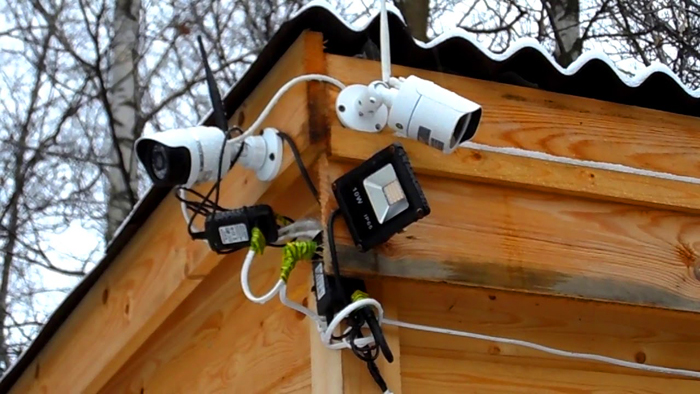
It is recommended to install video cameras on the wall of the house as high as possible
PHOTO youtube.com
Important! Experts recommend adding 10% to the resulting value for tolerances. But if you do not have much experience in laying low-current networks, you can safely add at least 15% to the calculated value.
Equipment selection criteria
Video surveillance systems, traditionally, consist of the following types of equipment:
- Outdoor and / or indoor video cameras;
- Video recorder;
- Centralized power supply device with power supply unit (uninterruptible power supply unit);
- Cable networks and or wi-fi router.
Additionally, the video surveillance system can be supplemented with the following devices:
Searchlights - infrared or visible light spectrum. As practice shows, it is better to use IR illuminators. Their light is invisible to the naked eye and the intruder will not be aware of the shooting and will not reveal active sectors of the view.
External hardware motion sensors. Most modern CCTV cameras are equipped with hardware and software motion detectors. Moreover, many models have a function for activating video recording at the moment of motion detection. Thus, installing an additional detector in a break in the power supply circuit can be called impractical.
Speakers and microphones. Provide an opportunity for remote interactive communication with visitors. And if uninvited guests have arrived at the summer cottage, a loud warning through the speaker that their illegal actions have been recorded and that a guard has left for the place, as a rule, will have an excellent preventive action.
Related article:
Ready-made video surveillance kits for a private house: varieties, secrets of the right choice, types of structures, an overview of popular models, how the equipment is installed - in our publication.
DVRs
Designed to collect storage and processing of video data. For a summer residence and a small private house, the minimum technical parameters of the DVR should be as follows:
- the ability to connect 4-6 CCTV cameras;
- use of modern methods (codecs) for processing H.264 video data;
- adjustable recording speed, but not less than 25 frames / sec for each camera;
- hard drive with a volume of 1-1.5 TB;
- the ability to connect to a cloud resource for online data transfer.
Security cameras
Taking into account the fact that CCTV cameras for summer cottages will be installed mainly outside, their internal structure and operational parameters will look as follows:
Matrix - CMOS. Despite the fact that it is more expensive than a CCD matrix, it is highly recommended to use it. CMOS sensors are more resistant to temperature changes and are much cheaper;
Resolution - from 2 to 5 Mpx. This range of values is universal and allows you to configure cameras for panoramic shooting of the area adjacent to the house, and for remote monitoring of the entrance group.
Light sensitivity - from 0.01 Lux. Together with an additional source of infrared illumination, this is quite enough to obtain a high-quality image at a distance of 10-15 m;
Lens - with a variable focal length of 4-9 mm.
Important! When purchasing a camera, be sure to check for features such as BLC - Back Light Compensation and / or VDR - High Dynamic Range. They will prevent the image from being illuminated by a light source pointed at the lens.
Data transmission devices
Wi-fi router. It is necessary to purchase it if you use the corresponding video cameras with wireless data transfer function. It should be noted that the power of the routers is indicated by the manufacturer with the clause “within the line of sight”. That is, the walls of the house can significantly reduce the data transmission range. Therefore, it is better to purchase a more powerful router or antenna amplifiers.
GSM module. In many ready-made kits, the gsm module is built directly into the DVR or the CCTV camera itself. It is used for operational data transmission and remote monitoring of the object. When using it, it will be necessary to additionally purchase a sim card from a mobile operator with a service package that provides Internet access.
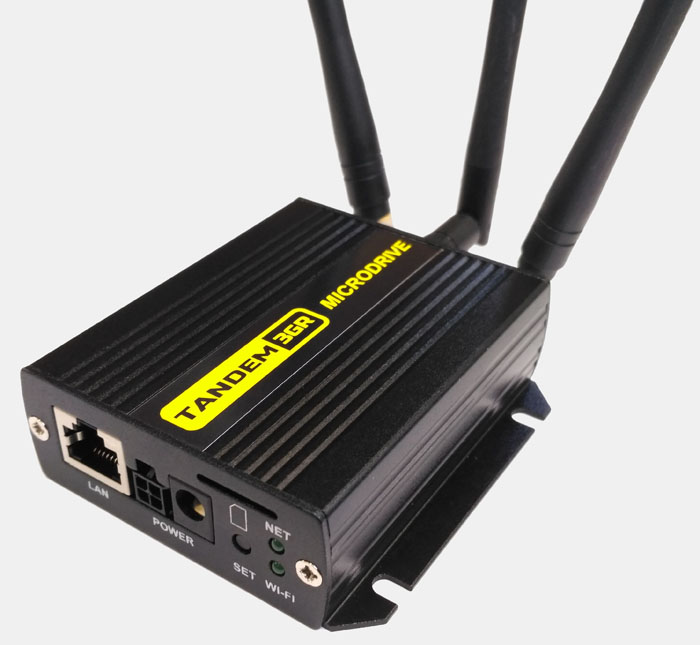
A universal wi-fi and 3G router with antennas and amplifiers is the optimal solution for a suburban video surveillance system
PHOTO: micro-drive.ru
Important! By purchasing the listed equipment separately, you can save some money. However, using ready-made kits, you can be sure of the compatibility of all its components. This is especially true for data transmission media.
Source of power
As a rule, modern CCTV cameras and video recorders have their own power supplies with converters. On the one hand, it is convenient as it does not require the purchase of additional equipment. But on the other hand, it is impossible to bring to every camcorder household power outlet... Therefore, it is more expedient to purchase a centralized power supply of the corresponding power with the ability to connect a power supply unit.
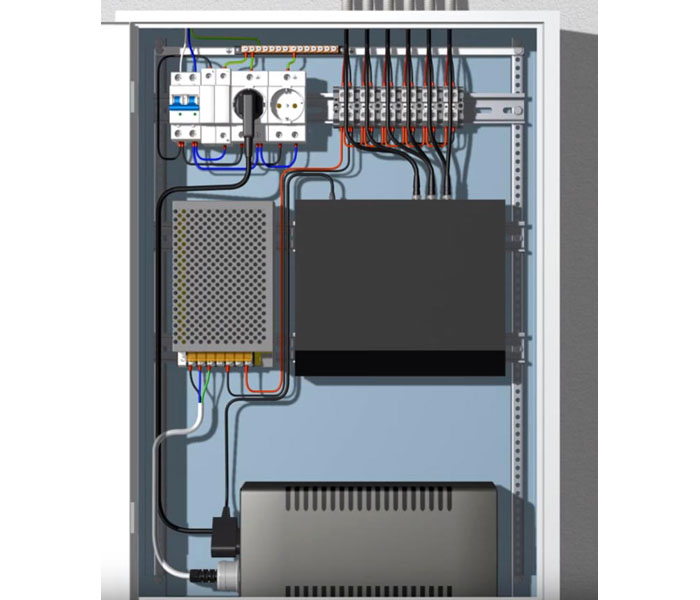
CCTV switch cabinet with installed power supply, uninterruptible power supply unit and video recorder
PHOTO: svetosmotr.ru
Installation of a video surveillance system for a summer residence
The video surveillance system installed in the country must be designed in such a way as to perform the following functions:
- record, processing and storage (transfer to cloud storage) of video information;
- detect unauthorized violation of the perimeter or movement (stay) in the controlled area;
- inform the owners of detecting violators using the available means of communication (phone call, MMS, SMS, e-mail);
- provide the possibility of remote access to control the current situation at the protected facility or view the archive of video data.
Rules for laying energy-carrying and information cables
After the equipment has been selected and a diagram of its location has been drawn up, it is necessary to mark the cable routes. Ideally, the wires used for data transmission should not come closer to the lines of the household power supply network closer than 35-50 cm, and even more so be located in parallel with them.
Wires for cameras and other equipment located on the street must be necessarily zeroed on the device body. And in the case of an overhead cable laying at a distance of more than 50 m, it needs to be grounded using special lightning protection means.
Installation of main equipment
Cameras should be positioned to monitor the following areas:
- the entire perimeter of the fence, in particular the entry and exit point;
- the inner space of the territory adjacent to the house;
- places of penetration into premises: windows, doors.
In this case, it is desirable that the viewing angles of the video cameras are mutually covered. Thus, the integrity of the peripheral equipment of the video surveillance system is monitored.
The traditional locations of video cameras at their summer cottage are as follows:
- poles of power lines located both directly on the site itself and near it;
- columns, cornices, decorative and bearing elements of the facade near the main entrance;
- corners and walls of the house, from which the best view of the controlled area opens.
Important! If the installation is carried out in the winter, then it is necessary to take into account the appearance of foliage, which can obscure the view of the video camera.
Some experts recommend placing the DVR, communications, and UPS in a secure metal cabinet or wall niche with a sturdy door. The rationale behind this solution is to keep the main components operational long enough so that they can send an alarm to the owner.
Additional elements
Additional equipment usually means different signal amplifiers. With regard to cable routes, it is recommended to use the following devices:
| Illustration | Amplifier type | Cable line length, m |
|---|---|---|
| LF amplifiers | 150-200 | |
| Passive Transceivers (Twisted Pair) | 200-300 | |
| Active Transceivers (Twisted Pair) | More than 300 |
Image acquisition methods
Video surveillance for a summer residence is not a self-sufficient security system. One of the main functions that determines its effectiveness is the promptness of informing the owner about an emergency. Thus, messaging and remote access issues are of the highest priority.
Through the Internet
The presence of the Internet provides extremely broad opportunities for remote control of the video surveillance system. External control can be implemented in the following ways:
Communication with one IP camera directly or via ddns service. The setting is as follows:
- The camera connects to a PC via a USB connection. In the window of any browser, its ip-address is entered (indicated on the box or on the camera itself);
- In the camera settings, find the ip-address field and change the value to the address received from the provider (a white ip-address is quite expensive) or from one of the DDNS services (special sites that can be accessed for free or for a small fee);
- It is imperative to change the factory login and password settings.
- Now, from a smartphone or PC, you can go to an IP video camera by specifying its ip-address in the address bar of the browser.
Communication through the cloud service. Many manufacturers of video surveillance equipment create their own cloud services. What resources are intended for automatic connection of IP cameras and are used as virtual video recorders, providing the user with the ability to remotely control and store video data. As a rule, the manufacturer's cloud services are free, but provide a minimum of functionality.
Via GSM modem
In most cases, the Internet provider does not have the technical ability to provide services by the owner of the summer cottages. Or cabling and wiring is very expensive. The way out of this situation is to use cellular communication. Special GSM modems are connected to a video recorder or router. However, this only provides a cellular communication channel. The equipment must be configured as follows:
- If there are several ip-cameras, then to work with them it is necessary to perform port forwarding. This step is to assign each camera a unique, static local IP address. It is performed through the DHCP service (subroutine).
- The IP address of the router is configured in the same way as described above, through a dedicated IP address or DDNS service.
Using repeaters
The transmission of video information requires a fairly wide communication channel. Often, summer cottages are located in places with a weak mobile signal. For a regular conversation on a cell phone, this is not essential. But when using a video surveillance system remotely, failures and a significant decrease in performance can be observed. The way out of this situation is the purchase and installation of a GSM signal amplifier - repeater.
Installation and connection of a GSM signal amplifier is not particularly difficult, however, it requires strict adherence to the following rules:
- The device should be located at least 1 m from the heating system elements;
- It is advisable to install an external antenna outdoors together with a stable (albeit minimal) mobile connection;
- It is recommended to lay the coaxial cable connecting the repeater and the antenna in accordance with the previously stated requirements.
Attention! It is strictly forbidden to turn on the repeater in operating mode without an antenna connected to it, this can lead to equipment failure.
How the video surveillance system is implemented in practice in the country / in a country house: video
conclusions
A video surveillance system is not something complicated; it is quite possible to install and configure it with your own hands. At the same time, even one IP-video camera installed in the country significantly increases security and by its very presence can prevent attempts to enter.
If the information presented in the article turned out to be useful, recommend it to your friends and take part in the discussion.



